ASUS A88X-PRO AMD FM2+ Motherboard Review
Motherboard Layout
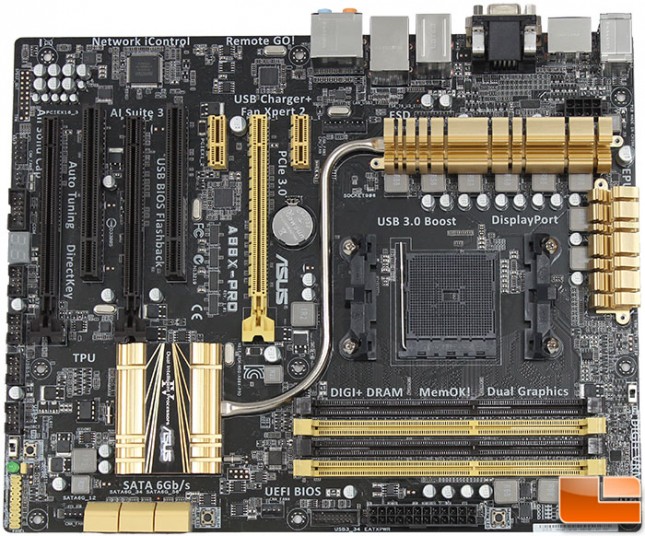
The A88X-PRO uses a black/dark brown PCB with specific components being gold/yellow. While this color scheme doesn’t suit my personal tastes, most of it will be covered once it is installed and the components are installed. The Southbridge chip has a large gold colored heatsink, which has a heatpipe to the heatsink above the CPU socket, which can be cooled a little by the CPU cooler. Using a low profile heatsink on the Southbridge allows the dual slot video cards to not run into space issues.
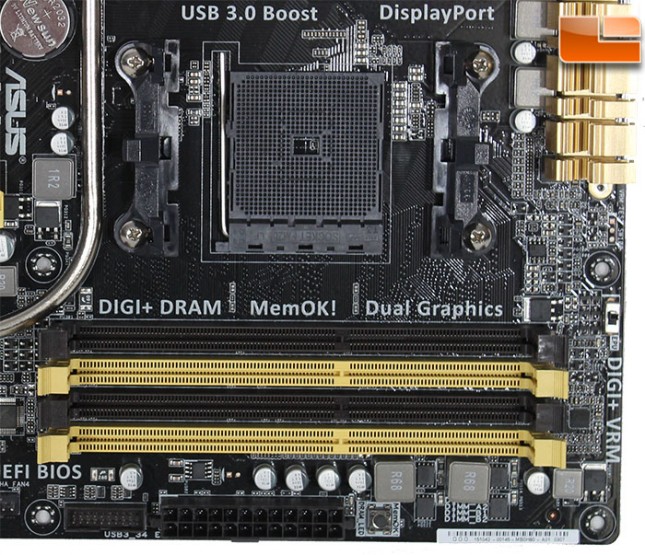
In the lower right section of the motherboard we find the four DDR3 DIMMs which support up to 64Gb of DDR3-2400, to the right of the memory is the ASUS EPU switch. Along the bottom edge is the SuperSpeed USB 3.0 internal header, the 24-pin ATX power connector, and the MEMOK! button.
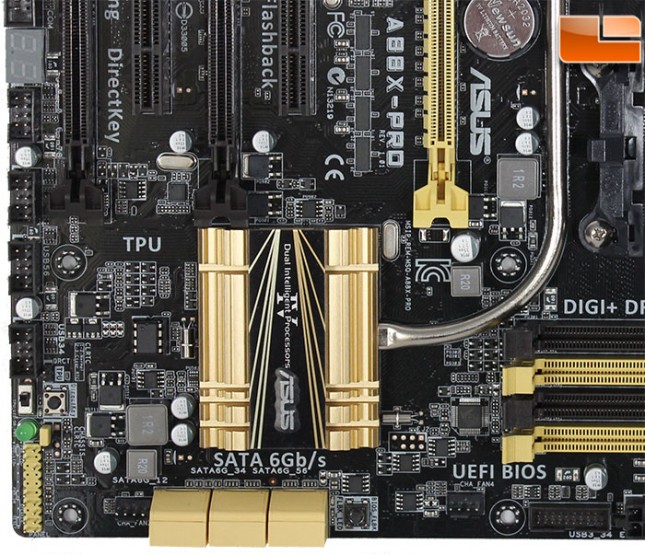
Along the left edge of the motherboard we find the debug LED, and four USB 2.0 headers. Then the TPU switch, DirectKey button, power LED, CMOS jumper and the front panel headers, which we will use the ASUS Q-Connector on. To the left of the SATA ports is 4-pin fan header listed as CHA_Fan3. On the right is the BIOS flashback button, and another 4-pin fan header (CHA_Fan 4).
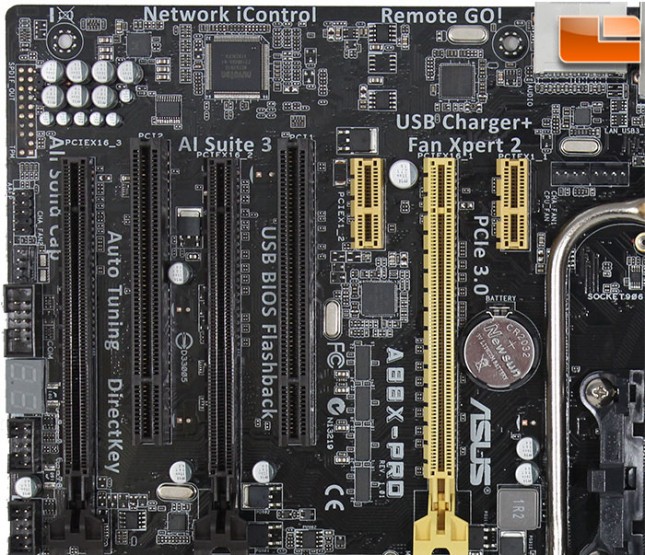
On the top left edge is the front audio header, 4-pin fan header (CHA-Fan2), COM header and the debug LED. The expansion ports are fairly obvious, there are three PCI-E 16x, two legacy PCI, and two PCI-E 1x. The yellow PCI-E 16x slot is PCI-E 3.0 at x16, or x8/x8 in dual mode; PCI-E 3.0 is only available on FM2+ APU’s. The PCI-E x16_2 slot is also PCI-E 3.0 but runs at x8. The far left PCI-E x16 slot only runs at x4. The Realtek ALC1150 audio chip is found above the PCI2 slot; this chip provides the 7.1 audio.
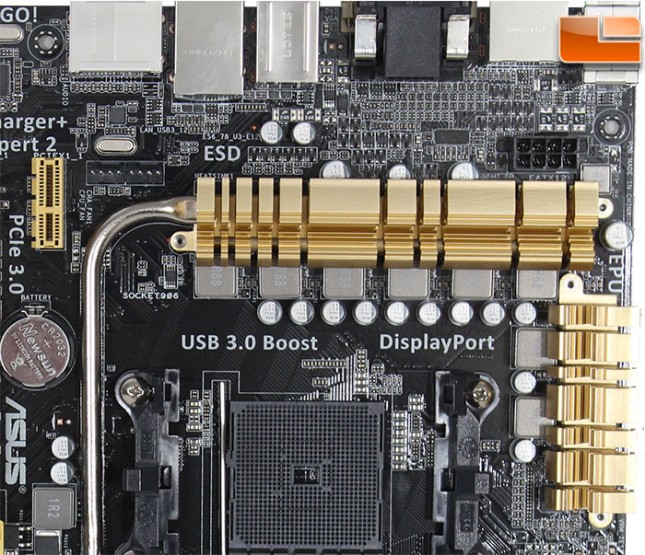
Right next to the PCI-E 1x lot, is a dual 4-pin PWM fan header listed as CPU_Fan (on the left) and CHA_Fan1 (on the right). On the right side, is a standard 8-pin 12v ATX Auxillary power socket. Solid Japanese made solid capacitors are used across the board.
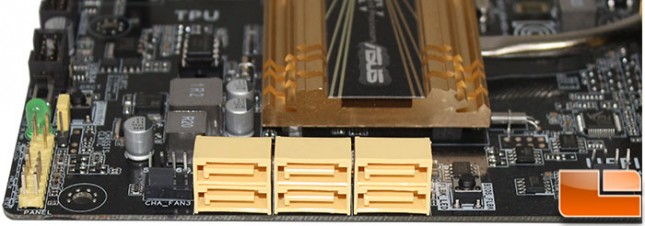
Nothing too exciting, six yellow 6Gb/s SATA connections that face the edge of the motherboard rather than being placed perpendicular to the motherboard where they might interfere with long video cards.

The rear I/O ports are fairly standard, on the far left is the combination keyboard/mouse PS/2 port, with two USB 2.0 below that. Next are the four video out options, DisplayPort, HDMI, VGA and DVI. Then 2x SuperSpeed USB 3.0 and 2x eSATA ports, Gigabit Ethernet and 2x SuperSpeed USB 3.0 ports. Finally, the audio cluster which includes the standard 5 analog ports, and one Optical S/PDIF output.
